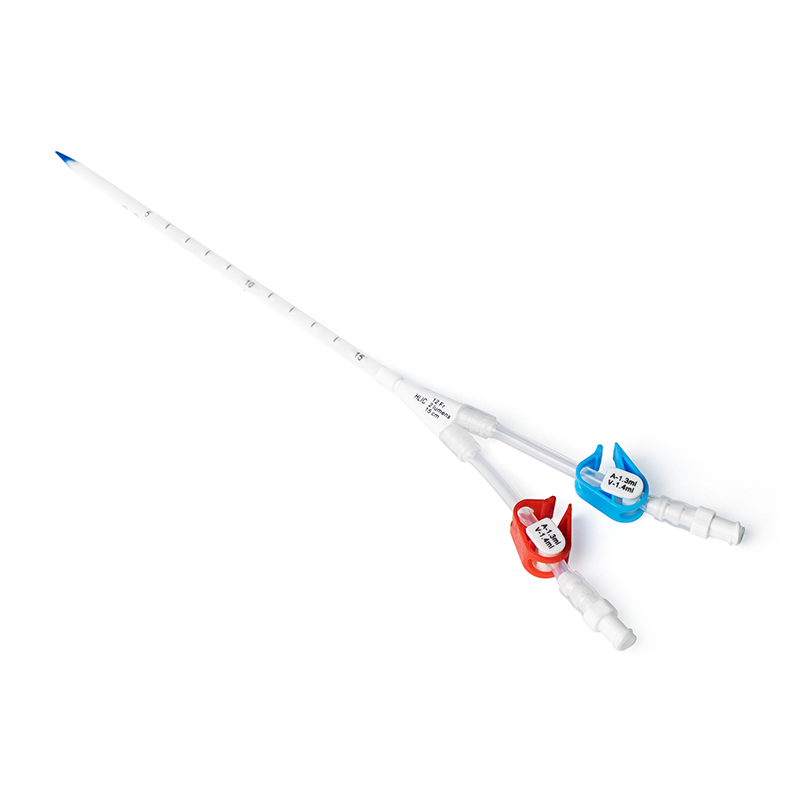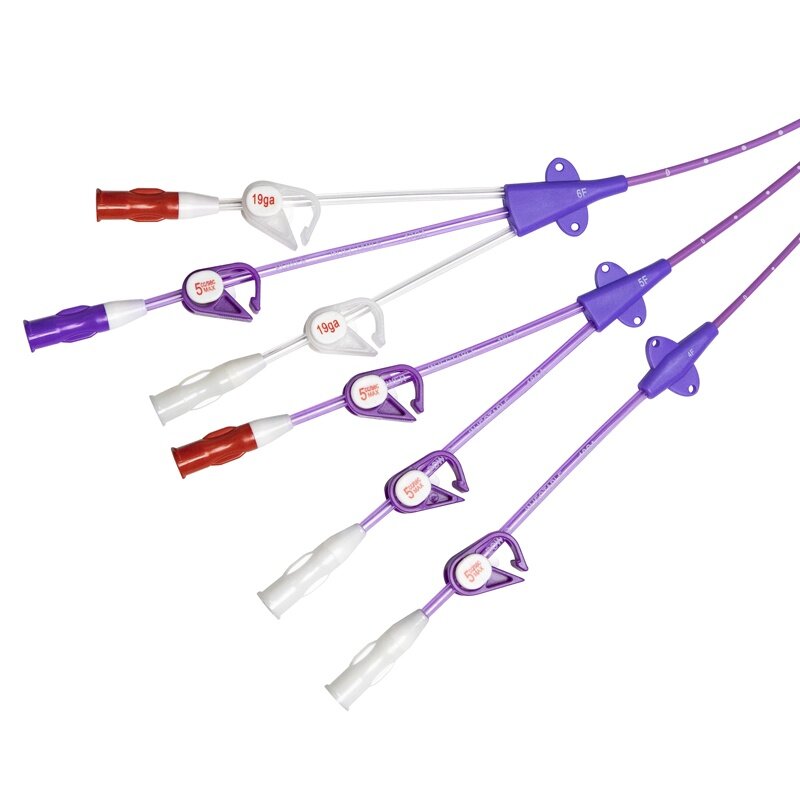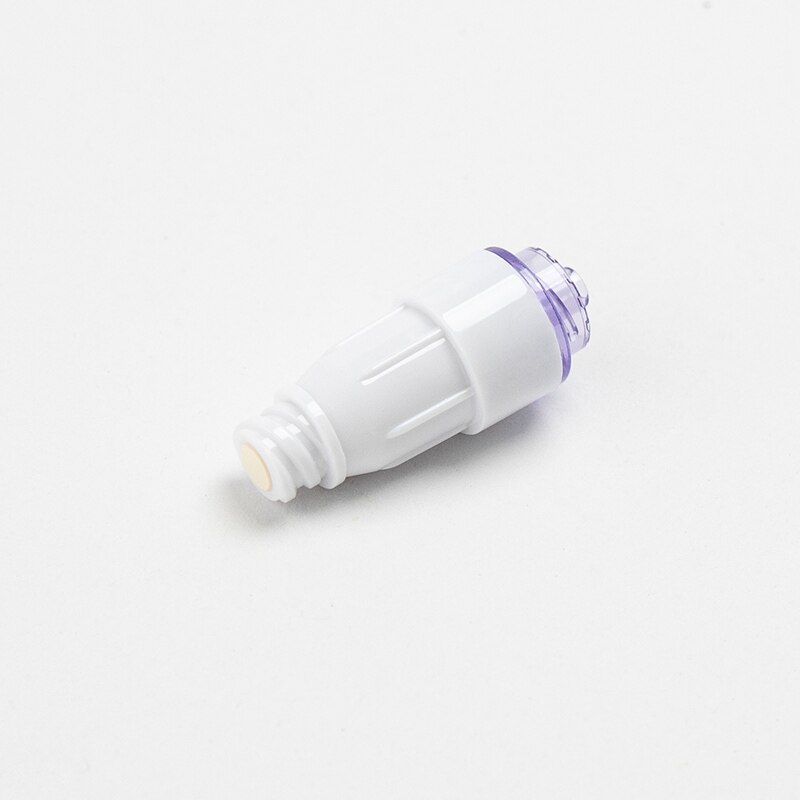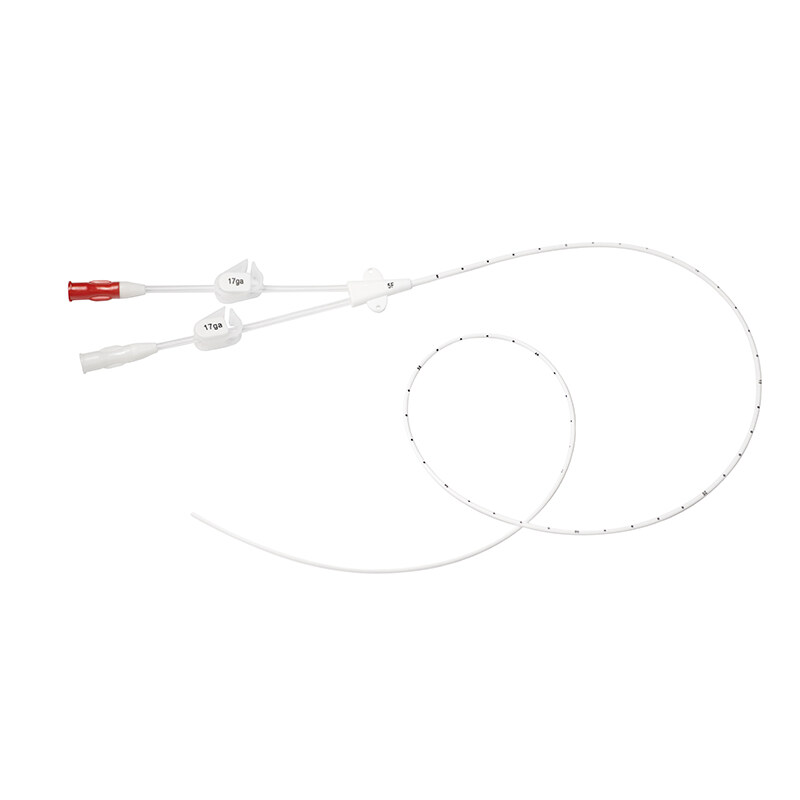A peripheral arterial catheter is a tube that is inserted into an artery through percutaneous puncture and remains in the lumen of the human body with communication to the outside. It can be used for monitoring blood pressure, determining blood volume, and collecting arterial blood specimens. It has become a major tool for hemodynamic monitoring of critically ill patients, which can reduce the pain and vascular injury caused by repeated punctures to patients. The utilization rate of peripheral arterial catheters in ICU patients is high, but there is a lack of targeted and authoritative management specifications. Therefore, the research team of this study invited medical and nursing experts in the relevant domestic fields to form an expert group. Recommendations have been formed from five aspects, namely the evaluation before catheterization, catheter indwelling, observation and maintenance during the period of catheter retention, preventive measures for complications, and catheter removal, providing guidance and reference for the clinical practice of the management of peripheral arterial catheters in adult ICU patients.
Assessment before Catheterization
Peripheral arterial catheters are widely used in critically ill patients. Its indications include:
- Hemodynamic instability, inability to perform non-invasive blood pressure measurement, need to judge the response to volume therapy based on changes in hemodynamic waveforms, or assistance in clinical diagnosis (2a, A);
- Difficulty in blood collection or the need for repeated collection of arterial blood specimens (2a, A);
- Patients undergoing surgical treatment who may experience massive hemorrhage during the operation, require controlled hypotension, hypothermic anesthesia, or need to monitor cardiac output and other major surgeries (2a, A).
There are no absolute contraindications for indwelling peripheral arterial catheters. Its relative contraindications include:
4. The ipsilateral radial artery of patients with a positive modified Allen test (5b, A);
5. Abnormal local vascular anatomy at the puncture site, existing or potential surrounding infections, trauma, or the need for surgery (4a, A).
Catheter Indwelling
- Personnel Qualifications: Relevant research shows that anesthesiologists are the main operators for peripheral arterial catheter puncture. In tertiary first-class hospitals, ICU nurses (45.2%) and doctors (41.1%) both participate in catheter insertion. Among them, 31.9% of ICU nurses routinely indwell arterial catheters for patients. The proficiency of catheter insertion operation and puncture process is closely related to catheter indwelling-related complications. Therefore, clinical departments using peripheral arterial catheters should formulate standardized catheter insertion operation specifications, and medical staff should receive relevant training and education. The "Consensus" recommends that ICU medical staff performing catheter insertion should be certified and professionally trained (3b, B).
- Puncture Site: The radial artery is the most common puncture site. The left radial artery is the preferred choice, followed by the brachial artery, ulnar artery, and dorsalis pedis artery (5b, A). The radial artery is located in the longitudinal groove between the flexor carpi radialis tendon and the lower end of the radius. The pulsation of the radial artery can be felt above and below the radial styloid process, which is the best site for peripheral arterial puncture.
- Assessment: Before puncture and catheter insertion, the Allen test should be routinely carried out to understand whether the collateral shunt from the superficial palmar arch of the ulnar artery is sufficient after the radial artery is blocked. Palpation, Doppler ultrasound, or oxygen saturation monitoring can be used to evaluate the blood flow of the hand (3b, B). The methods for evaluating the palmar collateral circulation of the radial artery include the classic Allen test, the modified Allen test, and the Allen test under finger pulse oximetry monitoring. The Allen test under finger pulse oximetry monitoring avoids the subjectivity of human judgment, and it is a non-invasive, easy-to-operate, and economical modified method. The Doppler ultrasound method uses the visualization characteristics of ultrasound and combines the out-of-plane (short-axis) technique with the in-plane (long-axis) technique, which can improve the success rate of the first catheter insertion and reduce the number of punctures.
- When inserting a peripheral arterial catheter, the principle of standard aseptic operation should be followed, and all components of the pressure monitoring system (calibration equipment and irrigation solution) should be kept sterile (5a, A).
- When inserting the catheter, the artery should be palpated with the non-dominant hand, and the operation should be carried out with the dominant hand. For those who have difficulty in direct puncture, ultrasound guidance or assistance is recommended (4b, B).
- The pre-filling of the irrigation system and the adjustment of the monitoring system should be done in advance. After the catheter enters the lumen and the needle core is withdrawn, the artery should be compressed proximally to prevent bleeding during the process of connecting the needle core to the tubing of the monitoring system (4b, B).
- The arterial catheter should be clearly labeled and firmly fixed, and the catheter insertion site, date, dressing change time, and removal date should be recorded (5b, A).
Observation and Maintenance during Catheter Retention
Observation and maintenance during catheter retention include the observation of blood pressure values and waveforms, the use specifications of the pressure sensor, the maintenance of the irrigation system and the monitoring system, local dressing change, etc.
13. The electrophysiological pressure signal monitored by the peripheral arterial catheter is converted into an electrical signal and formed into an image through a transducer, which can provide continuous and accurate blood pressure values. The values of peripheral arterial blood pressure are related to the catheter insertion position. Compared with the radial artery, the systolic blood pressure of the dorsalis pedis artery may be 10 mmHg higher (1 mmHg = 0.133 kPa), while the diastolic blood pressure is 10 mmHg lower (4b, A).
14. The blood pressure value in the left lateral position is lower than that in the supine position and the right lateral position. As the head of the bed is raised, the invasive arterial blood pressure value gradually increases (4d, A).
15. Waveform analysis can determine the volume responsiveness. By observing or measuring the waveform variability during respiration, the effect of fluid bolus therapy can be evaluated (5c, A). A good arterial waveform is the basis for correctly measuring blood pressure and hemodynamic variables. The performance characteristics of the arterial blood pressure waveform are determined by the natural frequency of the measurement system (the frequency of pressure pulse oscillation within the system) and the damping coefficient (describing the attenuation of the oscillating waveform). A too rigid pipeline and a defective transducer can lead to insufficient damping of the blood pressure signal, manifested as high systolic blood pressure, low diastolic blood pressure, high pulse pressure, etc. When the pressure of the irrigation solution pressure bag is low, there are bubbles in the loop, or the line connection fails, it will lead to excessive damping of the blood pressure signal, manifested as decreased systolic blood pressure, increased diastolic blood pressure, and decreased pulse pressure. When using a peripheral arterial catheter clinically, medical staff should maintain the stability of the arterial waveform to ensure the authenticity and effectiveness of the arterial blood pressure value.
16. The position of the sensor should be at the level of the heart, that is, the intersection of the fourth intercostal space and the midaxillary line. Being too low or too high will cause a pressure difference (5a, A).
17. In case of changes relative to the pressure sensor, such as the first use or changes in the patient's body position, zero calibration should be carried out. When it is continuously used, zero calibration should be carried out every 4 to 6 hours. Disposable sensors are recommended, and the sensor should be replaced every 96 hours, and it should be replaced immediately when it is contaminated (2b, A). During the blood pressure monitoring process, the pressure sensor should be at the same horizontal plane as the venous hydrostatic axis. A high position will lead to a lower blood pressure value, and a low position will lead to a higher blood pressure value, but the range of blood pressure fluctuation is still controversial.
18. For the closed and continuous irrigation system, the patency of the pressure monitoring catheter should be maintained. The irrigation pressure is 300 mmHg, and the irrigation speed is 3 ml/h. The manual flushing operation should be gentle, and the high-pressure flushing of the system flushing valve should not be used for a long time (1b, A).
19. 0.9% sodium chloride solution is the preferred irrigation solution. If a heparin irrigation solution needs to be used, the patient's contraindications should be evaluated (2b, A). The irrigation methods of the arterial irrigation system include intermittent injection with a syringe, continuous infusion with an infusion pump, continuous infusion with a micro-infusion pump, continuous infusion with a pressurized infusion set, etc. The use of an open irrigation system will increase the risk of accidental infection and arterial thrombosis. When there is blood return in the pipeline connected to the peripheral artery for blood collection, the pipeline should be flushed immediately to avoid local thrombosis and pipeline blockage.
20. Air should be avoided from entering the connecting pipeline or the blood (4b, A). The entry of residual air into the pipeline will lead to air embolism and affect the measured pressure value; entering the blood may lead to a weakened mechanical signal or an incorrect arterial pressure reading.
21. The principle of aseptic operation should be strictly observed during dressing change (5a, A).
22. A sterile transparent semi-permeable membrane dressing is routinely selected. It is recommended to change the dressing once every 7 days. The dressing should be changed immediately when it is wet, loose, contaminated, or there is bleeding or oozing at the puncture site (4a, A). Studies have shown that 91.5% of ICU nurses choose a sterile transparent semi-permeable membrane dressing, and only 5.9% of nurses choose an antibacterial dressing. The "Guidelines for the Prevention of Intravascular Catheter-Related Infections (2014)" points out that the use of a dressing impregnated with chlorhexidine can reduce the incidence of catheter-related bloodstream infections and bacterial colonization. There is still a controversy at home and abroad regarding whether to use an antibacterial dressing.
Preventive Measures for Complications
Unplanned extubation (UEX) is the most serious mechanical complication, with an incidence rate of 25% to 42%. Risk factors for UEX include an age of over 65 years, hypertension, venous thromboembolism, radial artery catheterization, and the use of indwelling venous catheters. As an invasive procedure, peripheral arterial catheterization can damage body tissues. The most effective measure to reduce the incidence of complications is to promptly remove the arterial catheter.
23. It is recommended to assess the necessity of catheter indwelling every day, and the catheter should be removed as early as possible (5a, A).
24. Catheter-related bloodstream infection is the most serious complication, with an incidence rate of approximately 3.3 per 1,000 cases. The low immunity of critically ill patients and intensive diagnosis, treatment, and nursing operations in the ICU will increase the risk of infection. Once an infection occurs, the mortality rate will increase by 25%. It is recommended that when an emergency arterial catheterization is performed, if strict aseptic operation is not carried out, the indwelling time of the arterial catheter should be ≤ 48 hours (3e, A).
25. It is recommended to select an appropriate puncture catheter according to the patient's vascular condition before catheterization and improve the puncture technique level (3b, A).
26. During the catheter retention period, the arterial catheter should not be routinely replaced, and the usual indwelling time should be ≤ 7 days (2b, A).
27. Observation and assessment during the catheter retention period are important means of preventing complications. It is recommended to check the local pulse condition, skin color, and temperature every day after puncture (2c, A).
28. For conscious patients, ask whether there is pain, swelling, or numbness in the punctured limb every day after puncture (4a, B).
Catheter Removal
29. Timing of removal: If there are obvious signs of infection in the peripheral arterial catheter, poor catheter function (waveform variation, no blood return, pipeline displacement, etc.), unexplained fever, or the arterial catheter is no longer needed, it should be removed immediately (5c, A).
30. Assessment before removal: Check coagulation function-related indicators such as the international normalized ratio, activated partial thromboplastin time, and platelet count. After removing the catheter, check the structural integrity of the catheter (5c, A).
31. Compression after removal: After removing the catheter from the radial artery puncture site, press for 5 minutes. For patients with coagulation dysfunction or a decreased platelet count, the compression time should be extended to 10 minutes. If there is continuous bleeding, continue to press for 5 minutes and then check again. Bandage the wound after the bleeding stops (2b, B).
32. Observation after removal: 15 minutes after removing the catheter, observe the puncture site and the distal pulse again, and assess for signs of local hematoma or limb ischemia (4a, A).
References:
[1] Pipeline Nursing Professional Committee of Qingdao Nursing Society, Venous Thromboembolism Professional Committee of Qingdao Nursing Society, Pain Nursing Professional Committee of Shandong Nursing Society. Expert Consensus on the Management of Peripheral Arterial Catheters in Adult ICU Patients [J]. Chinese Journal of Modern Nursing, 2024, 30(11): 1401-1406. DOI: 10.3760/cma. j.cn115682-20230529-02126.





